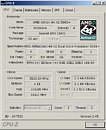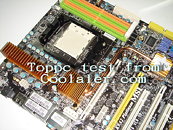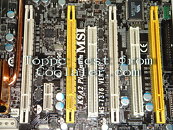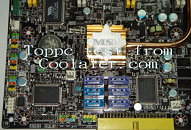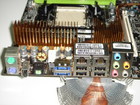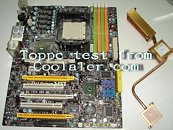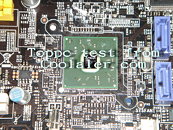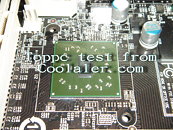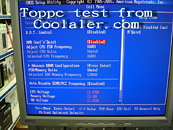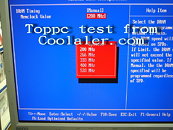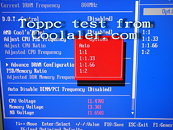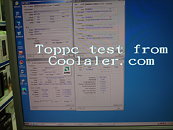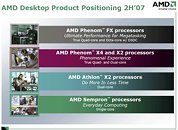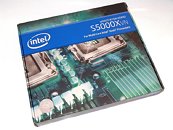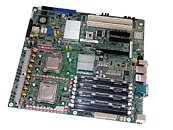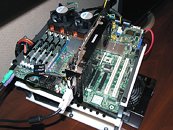Apr 1st, 2025 04:30 EDT
change timezone
Latest GPU Drivers
New Forum Posts
- Your PC ATM (35318)
- TPU's Nostalgic Hardware Club (20144)
- DTS DCH Driver for Realtek HDA [DTS:X APO4 + DTS Interactive] (2122)
- 4070tisuper (10)
- AIO - 120mm cpu cooler? (38)
- RTX 5080 - performance fluctuation (9)
- Build complete! Any thoughts on undervolting? (20)
- Case fans work but can’t sync w/ rgb and stuck full rpm (1)
- Undervolt i9-14900HX Laptop Newbie (8)
- Help with System Recommendations (5)
Popular Reviews
- Sapphire Radeon RX 9070 XT Pulse Review
- DDR5 CUDIMM Explained & Benched - The New Memory Standard
- ASRock Phantom Gaming B850 Riptide Wi-Fi Review - Amazing Price/Performance
- Palit GeForce RTX 5070 GamingPro OC Review
- SilverStone Lucid 04 Review
- Samsung 9100 Pro 2 TB Review - The Best Gen 5 SSD
- Enermax REVOLUTION D.F. 12 850 W Review
- Sapphire Radeon RX 9070 XT Nitro+ Review - Beating NVIDIA
- Assassin's Creed Shadows Performance Benchmark Review - 30 GPUs Compared
- AMD Ryzen 7 9800X3D Review - The Best Gaming Processor
Controversial News Posts
- MSI Doesn't Plan Radeon RX 9000 Series GPUs, Skips AMD RDNA 4 Generation Entirely (142)
- Microsoft Introduces Copilot for Gaming (124)
- AMD Radeon RX 9070 XT Reportedly Outperforms RTX 5080 Through Undervolting (119)
- NVIDIA Reportedly Prepares GeForce RTX 5060 and RTX 5060 Ti Unveil Tomorrow (115)
- Over 200,000 Sold Radeon RX 9070 and RX 9070 XT GPUs? AMD Says No Number was Given (100)
- NVIDIA GeForce RTX 5050, RTX 5060, and RTX 5060 Ti Specifications Leak (96)
- Retailers Anticipate Increased Radeon RX 9070 Series Prices, After Initial Shipments of "MSRP" Models (90)
- China Develops Domestic EUV Tool, ASML Monopoly in Trouble (88)
News Posts matching #Processors
Return to Keyword Browsing
AMD Fudges Power Consumption Figures by Making Up Power Consumption Rating System
When AMD released the K10 micro-architecture, which included Phenom and Barcelona, they unfortunately neglected to mention that they had also released an entirely new way to benchmark power consumption and thermal output. AMD's Average CPU Power system, or "ACU" for short, is a new way to measure the amount of power a CPU really requires, and consequently, the heat it puts out. AMD, when asked, claimed that their way of measuring things was comparable to the TDP system. However, independent results reveal otherwise.
AMD's great quad-core Phenom-based Opteron got a reasonable 75W power consumption rating using AMD's system. However, when put under the traditional TDP test, the Opteron quickly heated up to requiring 95W. Stunned, the testers tried again, and the same CPU got a remarkable 115W TDP load. The full version of the chart is available at the source link. For comparison, Intel's biggest and baddest quad-core CPU uses 120W TDP full load.
AMD's great quad-core Phenom-based Opteron got a reasonable 75W power consumption rating using AMD's system. However, when put under the traditional TDP test, the Opteron quickly heated up to requiring 95W. Stunned, the testers tried again, and the same CPU got a remarkable 115W TDP load. The full version of the chart is available at the source link. For comparison, Intel's biggest and baddest quad-core CPU uses 120W TDP full load.

AMD to Bring Back K8 Architecture
AMD feels that the K8 architecture still has a little life in it. While Intel is working hard on 45-nm and Quad Core platforms that will cost quite a pretty penny, AMD is working on cost-effective and energy efficient solutions for the dudes that don't need or can't afford 1.21 gigawatts of processing power. To create said solutions, AMD is going to revert to an old favorite: the tried-and-true K8 architecture. After putting the K8 series through a die shrink, AMD plans to bring 11 65nm K8 CPUs to market, under the code-name Brisbane. The new 65nm variants of the K8 architecture will more likely than not require very little power to run, and will even more likely be clocked at high speeds. AMD is putting a large focus on energy efficiency, as the majority of current confirmed CPU models are flagged "Energy Efficient". All of the new 65nm K8 chips will be socket AM2, and will work in an AM2+ motherboard.

Intel Launches Itanium 9100 Series
Underscoring strong momentum and industry support, Intel Corporation today unveiled Dual-Core Intel Itanium Processor 9100 series processors. Built for managing high-end applications and armed with advanced features that improve reliability and reduce power consumption, the 9100 series accentuates the ongoing shift from proprietary RISC products to the choice offered by Itanium-based servers. The 9100 series represents the sixth generation of Itanium chips, with three future generations under development.

Athlon 64 X2 6400+ Black Edition Hits 510MHz FSB on AMD RD790 on Air
Regardless of theoretical performance, the upcoming AMD RD790 and Athlon 64 Black Edition line of processors certainly are overclockable and feature-laden. On nothing but air cooling, MSI testers were able to get an RD790 chipset to a remarkable 510MHz FSB speed. Once the RD790 is released with PCI Express 2, CrossFire X, and support for goodies such as Phenom, we will see one seriously good platform.

AMD to Produce Hundreds of Thousands of Quad Core Processors to Meet Demand
AMD recently admitted that it was not quite prepared when they launched quad-core processors earlier this year. Even after the delays, there simply were not enough AMD quad core offerings to go around. And so, to make up for that, they've announced that they're going to make a lot more quad core processors this quarter. The official statement by AMD:
While our initial production ramp of quad-core Opterons has been slower than anticipated, we expect quad-core Opteron will be widely available by the middle of this quarter; and, we expect to ship hundreds of thousands of quad-core processors this quarter into the server and desktop segments.

Intel to Phase Out Single Core Processors
Intel took on the mindset of "out with the old and in with the new", and their choice is reflected in their roadmaps. Starting in Q1 2008, Intel will remove their single-core offerings from the market by replacing them with superior dual-core models. The upcoming Celeron E1000 series will be the first entry-level dual-core processor to hit the market. The first dual-core Celeron, the E1200, is clocked at 1.6GHz, has an 800MHz FSB, a 512KB L2 cache, and will cost a mere $51 USD (in thousand-unit quantities). All of the E1000 series will be based on the Core 2 Duo micro-architecture, and will be 45nm parts.

Newegg Offers AMD Socket-AM2 Sempron 'Sparta' Edition
Part of AMD's marketing plan is to make creative, enticing names for their products. For one of their low-energy models, AMD's marketing department did a fine job creating a very memorable CPU core code-name: Sparta. For the low price of $46 shipped, you can have your very own Spartan computer part. This product offers more than an awesome name, however. The value-oriented part is built on a 65nm micro-architecture, requires only an impressive 45W of energy to run, runs at 1.9GHz with an FSB speed of 800MHz, has an L1 cache of 64KB+64KB, and an L2 cache of 256KB. Anyone hoping to own an AMD Sempron LE-1100 should follow the source link..

AMD Price Cuts Coming Next Monday
Fortunately for anybody considering an upgrade to AMD AM2 processors, AMD will be slashing prices on their Athlon 64 processors. Just some examples of price cuts we'll be seeing...
The Athlon 64 X2 5000+ currently costs $119, and will soon cost $109USD.
The Athlon 64 X2 5200+ currently costs $124, and will soon cost $119USD
The Athlon 64 X2 5600+ currently costs $149, and will soon cost $139USD.
The Athlon 64 X2 5000+ currently costs $119, and will soon cost $109USD.
The Athlon 64 X2 5200+ currently costs $124, and will soon cost $119USD
The Athlon 64 X2 5600+ currently costs $149, and will soon cost $139USD.

AMD Athlon 64 X2 5000+ Black Edition Surprisingly Overclockable
When AMD first released the 5000+ version of the Black Edition series of processors, it seemed pretty unimpressive. However, the Black Edition processors are a lot like the old FX processors: they come with an unlocked multiplier, and are hand-picked for overclocking. And so, while the Black Edition processors may not be the best at stock clocks, they certainly are good at overclocking. Just as an example, a Chinese overclocker was able to push his 5000+ Black Edition to a respectable 3.5GHz on stock cooling.

MSI K9A2 and AMD RD790 Pictures/Details and QuadFire Rumors Emerge
While Intel is preparing to move on to a 45nm micro-architecture, AMD is preparing true quad-core processors, and working on a quad-graphics card solution. The technology that will allow for four graphics cards to be stuck in one system will be called "QuadFire", and there are no major details out at this time, other than the name and pictures of supporting motherboards. The chipset supporting "QuadFire" is AMD's own RD790, which is pictured below in MSI's K9A2 motherboard. The RD790 is designed to work with a Phenom processor, has six SATA ports, and two E-SATA ports.
Pictures courtesy of OCWorkbench.
Pictures courtesy of OCWorkbench.

Via introduces 1W Eden processor for embedded applications
Via is well known for low power CPUs, so it comes as no big surprise that the company will be offering a new Eden processor with a power consumtion of a mere Watt. The new CPU adopts the typical VIA V4 bus and 21mm × 21mm nanoBGA2 packaging as other Eden models, but sets itself apart offering a 500MHz core frequency at a power consumption of only 1W. It is meant for network applicances or embedded boards.

Intel Penryn Micro-architecture to Debut on November 11
Intel's next big thing is 45 nanometer architecture, which it has applied to their new Penryn micro-architecture. On November 11, Intel will release seven Xeon processors containing the new micro architecture. Among the seven processors are the 2.00GHz E5405, the 2.33GHz E5410, the 2.50GHz E5420, the 2.66GHz E5430, the 2.83GHz E5440, the 3.00GHz E5450 and the 3.16GHz X5460. All seven chips operate on a 1333MHz frontside bus. No official prices are available at this time, and we will see more Penryn processors in Q1 2008.

Intel to Cut Prices and Launch New Core 2 Duos on September 2
AMD isn't the only one making new CPUs: Intel plans to announce a new Core 2 Duo CPU and make some hefty price cuts on September 2nd. The Core 2 Duo T7800 is a laptop chip, will be clocked at 2.6GHz, run on a 800MHz bus, and have 4MB of L2 cache. Intel will also launch the Core 2 Duo T7250, which is clocked at 2GHz, with a bus speed of 800MHz and 2MB of L2 cache. For budget customers, Intel has the new 2.0GHz Celeron M 550. There is no word on how much these new processors will cost, but the current Core 2 Duo prices will definitely get cut on September 2nd.

AMD Unveils Athlon 64 X2 6400+ Black Edition
While every hardcore AMD fan awaits the Barcelona and Phenom series of CPUs, AMD is busy making the best out of what it has already. In a Japanese presentation, AMD showed off the Athlon 64 6400+ "Black Edition". This CPU should hit retail markets on August 20th, and should cost anywhere between $220 and $240 USD. The CPU runs on a 90nm process, and is clocked at 3.2GHz.
At the same presentation, AMD demoed a Phenom X4 system at 3GHz in an AMD RD790 motherboard. AMD somehow managed to present this without anyone getting good performance numbers.
At the same presentation, AMD demoed a Phenom X4 system at 3GHz in an AMD RD790 motherboard. AMD somehow managed to present this without anyone getting good performance numbers.

Barcelona issues
With the passable launch date of September 10 there seems two be a couple of problems with the chip and compatibility. It seems that the Dual Dynamic Power Management will not work without a BIOS update, and with a supported motherboard. This is something to be expected from knowing that some features will not be supported on former socket types.
"It seems the CPU itself is capable of engaging in CoolCore operations, but not Dual Dynamic Power Management (formerly "Split Plane," which allowed each core to operate independently with different voltages and clock speeds). It won't be able to handle these power saving and performance enhancing aspects of operations from the core alone. The motherboard must be brought into the mix in an active way to help reduce power consumption and save energy when the many cores are not in high use."
The other issue while not truly being an issue is the 128-bit floating point. There simply isn't any software on the market to take advantage of it. Hearing something like this isn't new to the PC market at all. The 64Bit CPUs are just now starting to see the light after a few years of their release, and Dual core CPUs are also just now starting to be implemented into applications. It's safe to say that the 128-bit floating point technology may take some time before developers start using it.
"It seems the CPU itself is capable of engaging in CoolCore operations, but not Dual Dynamic Power Management (formerly "Split Plane," which allowed each core to operate independently with different voltages and clock speeds). It won't be able to handle these power saving and performance enhancing aspects of operations from the core alone. The motherboard must be brought into the mix in an active way to help reduce power consumption and save energy when the many cores are not in high use."
The other issue while not truly being an issue is the 128-bit floating point. There simply isn't any software on the market to take advantage of it. Hearing something like this isn't new to the PC market at all. The 64Bit CPUs are just now starting to see the light after a few years of their release, and Dual core CPUs are also just now starting to be implemented into applications. It's safe to say that the 128-bit floating point technology may take some time before developers start using it.

AMD's Phenom FX Lineup revealed
According to AMD's most recent roadmap, 2 Phenom FX series will see the light of day: Phenom FX-80 and Phenom FX-90. The FX-80 will be designed as single-core CPU's while the FX-90 will be designed as 4x4 dual CPU's.
The plan is to launch the Phenom FX-90 CPU's by Q1 2008 and the FX-80's a little earlier during the November-December interval.
The plan is to launch the Phenom FX-90 CPU's by Q1 2008 and the FX-80's a little earlier during the November-December interval.

AMD denies all rumors of Phenom being delayed
AMD has recently denied the rumor that Phenom would be delayed. AMD says that they will have Phenom released during Q4 2007, despite motherboard manufacturers saying otherwise.
However, any Phenom launch before Q1 2008, according to AMD, will be a mere paper launch, not unlike the HD 2x00 series. Motherboard manufacturers claim that this delay is give AMD enough time to make enough Phenom processors for a heavy AMD fanbase. This is also a move designed to make Phenom more competitive with Penryn.
However, any Phenom launch before Q1 2008, according to AMD, will be a mere paper launch, not unlike the HD 2x00 series. Motherboard manufacturers claim that this delay is give AMD enough time to make enough Phenom processors for a heavy AMD fanbase. This is also a move designed to make Phenom more competitive with Penryn.

Intel Shipped one million quad-core Xeon chips
Intel (or "Chipzilla", as The Inquirer lovingly refers to them), according to Intel spokesperson Danny Cheung, has sold one million quad-core Xeon 5300 processors. "Clovertown" was unleashed just last November, and thanks to great performance and competitive pricing, is solely responsible for re-claiming the Server market for Intel. The entire Clovertown line is priced between $455 and $1,172 USD, according to Intel's price list.

AMD Native x86 Quad-Cores Shipping In August
AMD announced today that Quad-Core AMD Opteron processors, code-named "Barcelona," are planned for shipment in both standard and low power versions at launch later this summer. This would be the first time AMD has made both standard and low power parts immediately available as part of a new processor launch.
During this first launch, processor speeds are expected to be available up to 2.0 GHz.
During this first launch, processor speeds are expected to be available up to 2.0 GHz.

Griffin to Replace AMD's Turion Mobile Processor
Based on the K8 core, AMD's next generation mobile processor will be released mid-2008. The 65nm core socket S will receive Barcelona's Hyper transport 3 and will boast better power efficiency and management than its predecessor with its ability to limit the power consumption of the memory interface. The RS780/780G chipsets will combine with Griffin to include Hyperflash and Puma, which competes directly with Intel's Turbo Memory.

Sun Boots Solaris 10 on "ROCK" 16-core SPARC Processor
Sun Microsystems, Inc., today announced it has successfully booted the Solaris 10 operating system (OS) on its high-end "ROCK" SPARC processor for the first time. This important milestone comes ahead of schedule and within six weeks of Sun receiving its first shipment of prototype ROCK processors. "Booting Solaris for the first time is a critical accomplishment in the development of our high-end, chip multithreading (CMT) technology," said David Yen, executive vice president for Sun Microelectronics.

AMD to Introduce the Phenom Brand
Over the next two weeks AMD will slowly begin to introduce its new brand name for the next generation high end desktop K10 architecture. The brand, Phenom, will succeed Athlon on all K10 offerings. Dual-core Agena processors will be labeled as Phenom X2 while quad-core Agena CPUs will receive the name Phenom X4 or Phenom FX. Phenom is pronounced as an abbreviated version of the word "phenomenal." The company will still retain its Athlon and Sempron brand names - Athlon on its mid-range products and Sempron on up the low-end.

Intel brings Core 2 Duo to low-power chips
Intel is rolling out a pair of ultra-low power chips for compact notebooks and small PCs.
The two new Core 2 Duo chips only consume a maximum of 10 watts of power when running full speed, which makes them ideal for ultraportable notebooks or other devices where size or battery life is at a premium. As a comparison, Intel's Core 2 Duo processors for regular notebooks consume about 34 watts of power at maximum performance.
Intel will offer the chips in two speeds, the U7600 runs at 1.2GHz and the U7500 runs at 1.06GHz.
The two new Core 2 Duo chips only consume a maximum of 10 watts of power when running full speed, which makes them ideal for ultraportable notebooks or other devices where size or battery life is at a premium. As a comparison, Intel's Core 2 Duo processors for regular notebooks consume about 34 watts of power at maximum performance.
Intel will offer the chips in two speeds, the U7600 runs at 1.2GHz and the U7500 runs at 1.06GHz.

8-Core Intel Xeon 'V8" Sneak Peek
In respond to AMD's Quad FX, Intel announced in January at this year's Consumer Electronics Show, new platform dubbed "V8". The guys at HotHardware.com have managed to take a good look at it and run some benchmarks. The "V8" consists of Intel workstation-class S5000XVN dual-socket motherboard, coupled to a pair of Xeon X5365 processors, 4GB of Samsung DDR2-667 FBDIMMs, and a GeForce 8800 GTX. The motherboard is based on Intel's 5000X chipset and the processors are clocked at 3.0GHz a piece(1333MHz FSB). Click here, to see some preliminary testing on this rig.

Santa Rosa Laptops leaking out
Laptops based on Intel's new Centrino platform Santa Rosa are starting to leak out, this time they're from Lenovo (a few Fujitsu models got out last week). The new ThinkPads T61 and R61 are both based on Intel's Core 2 Duo processors and use Intel's Gm/PM965 chipset. Other specs include both 32-bit and 64-bit versions of Vista and Windows XP Pro, Intel's new Wi-Fi Link 4965AGN, Intel Graphics Media Accelerator X3100 IGP (for systems using integrated graphics), NVIDIA graphics (for other systems), 14.1" screens, Intel Turbo Card, smartcard support and full hard disk encryption. These laptops should be available from May this year, with a Blu-Ray version coming in July. Lenovo will also finally be removing the IBM branding from palm rests after acquiring Big Blue's laptop division in 2005.
Apr 1st, 2025 04:30 EDT
change timezone
Latest GPU Drivers
New Forum Posts
- Your PC ATM (35318)
- TPU's Nostalgic Hardware Club (20144)
- DTS DCH Driver for Realtek HDA [DTS:X APO4 + DTS Interactive] (2122)
- 4070tisuper (10)
- AIO - 120mm cpu cooler? (38)
- RTX 5080 - performance fluctuation (9)
- Build complete! Any thoughts on undervolting? (20)
- Case fans work but can’t sync w/ rgb and stuck full rpm (1)
- Undervolt i9-14900HX Laptop Newbie (8)
- Help with System Recommendations (5)
Popular Reviews
- Sapphire Radeon RX 9070 XT Pulse Review
- DDR5 CUDIMM Explained & Benched - The New Memory Standard
- ASRock Phantom Gaming B850 Riptide Wi-Fi Review - Amazing Price/Performance
- Palit GeForce RTX 5070 GamingPro OC Review
- SilverStone Lucid 04 Review
- Samsung 9100 Pro 2 TB Review - The Best Gen 5 SSD
- Enermax REVOLUTION D.F. 12 850 W Review
- Sapphire Radeon RX 9070 XT Nitro+ Review - Beating NVIDIA
- Assassin's Creed Shadows Performance Benchmark Review - 30 GPUs Compared
- AMD Ryzen 7 9800X3D Review - The Best Gaming Processor
Controversial News Posts
- MSI Doesn't Plan Radeon RX 9000 Series GPUs, Skips AMD RDNA 4 Generation Entirely (142)
- Microsoft Introduces Copilot for Gaming (124)
- AMD Radeon RX 9070 XT Reportedly Outperforms RTX 5080 Through Undervolting (119)
- NVIDIA Reportedly Prepares GeForce RTX 5060 and RTX 5060 Ti Unveil Tomorrow (115)
- Over 200,000 Sold Radeon RX 9070 and RX 9070 XT GPUs? AMD Says No Number was Given (100)
- NVIDIA GeForce RTX 5050, RTX 5060, and RTX 5060 Ti Specifications Leak (96)
- Retailers Anticipate Increased Radeon RX 9070 Series Prices, After Initial Shipments of "MSRP" Models (90)
- China Develops Domestic EUV Tool, ASML Monopoly in Trouble (88)



